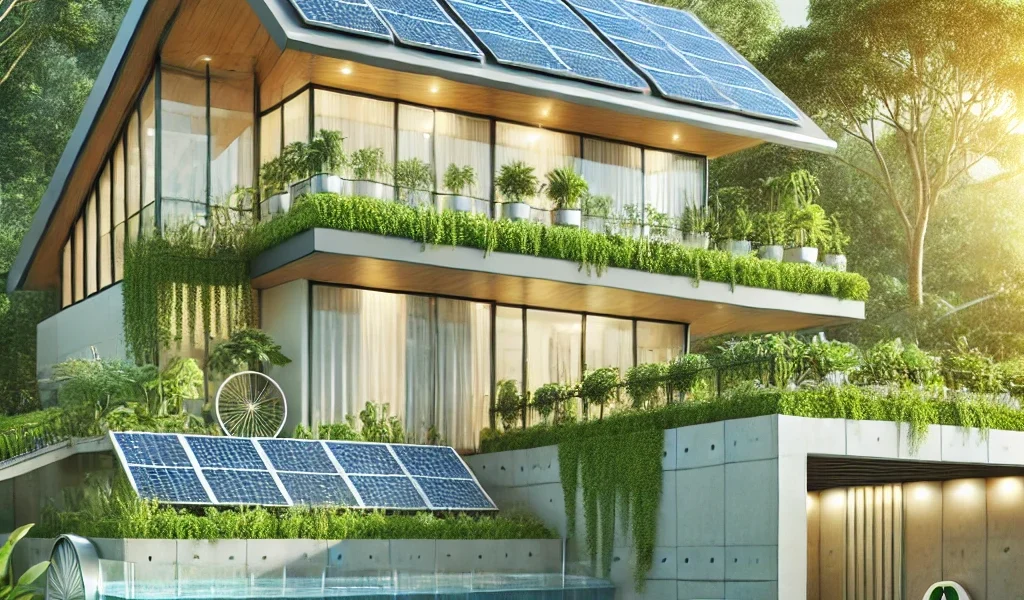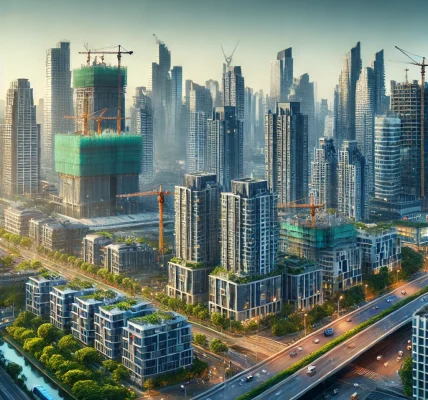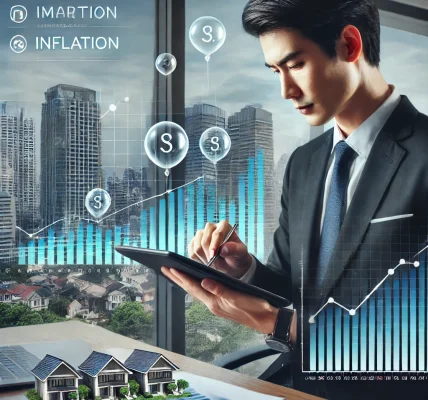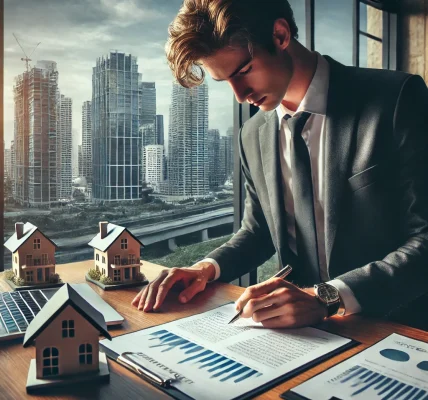Introduction
The demand for eco-friendly real estate is rapidly increasing as buyers and investors recognize the financial and environmental benefits of sustainable properties. Green buildings not only reduce carbon footprints but also provide long-term cost savings and higher investment returns.
This DIY guide explores the advantages of investing in sustainable real estate, highlighting key eco-friendly features, financial benefits, and strategies for maximizing returns.
1. Understanding Eco-Friendly Real Estate
Eco-friendly real estate refers to properties designed and built with sustainability in mind. These properties prioritize energy efficiency, renewable materials, and reduced environmental impact.
Key elements of green properties include:
- Energy-efficient appliances
- Solar panels and renewable energy sources
- Water conservation systems
- Smart home technology
- Sustainable building materials
- Improved insulation and ventilation
By incorporating these elements, eco-friendly properties promote a healthier living environment while enhancing property value.
2. Financial Benefits of Investing in Sustainable Real Estate
2.1 Reduced Operating Costs
Sustainable homes consume less energy and water, leading to lower utility bills. Features such as solar panels, LED lighting, and energy-efficient HVAC systems reduce long-term expenses.
2.2 Higher Property Value & Resale Potential
Eco-friendly properties attract environmentally conscious buyers, leading to higher demand and resale prices. Studies indicate that green-certified homes sell for 5% to 10% more than traditional homes.
2.3 Tax Incentives & Government Rebates
Many governments offer tax credits, grants, and rebates to encourage green construction and upgrades. Some common incentives include:
- Solar tax credits
- Energy-efficient mortgage discounts
- Property tax exemptions for eco-friendly upgrades
2.4 Lower Maintenance Costs
Sustainable materials such as bamboo flooring, recycled metal, and composite wood are more durable than conventional materials, reducing long-term maintenance costs.
2.5 Increased Rental Income
Green buildings attract tenants willing to pay higher rents for energy savings and sustainability benefits. Eco-friendly rental units report lower vacancy rates and stable rental income.
3. Key Eco-Friendly Features That Enhance Property Value
3.1 Energy Efficiency & Renewable Energy
- Solar panels: Reduce electricity bills and provide energy independence.
- Smart thermostats: Optimize heating and cooling efficiency.
- High-efficiency windows: Prevent heat loss and improve insulation.
3.2 Sustainable Water Management
- Low-flow faucets and toilets: Reduce water consumption.
- Rainwater harvesting systems: Collect and store rainwater for reuse.
- Drought-resistant landscaping: Minimizes water usage in gardens.
3.3 Green Building Materials
- Recycled wood and steel: Reduce environmental impact.
- Eco-friendly insulation: Enhances energy conservation.
- Non-toxic paint: Improves indoor air quality.
3.4 Smart Home Technology
- Automated lighting: Reduces unnecessary energy consumption.
- Energy monitoring systems: Tracks and optimizes energy usage.
- Voice-controlled appliances: Enhances convenience and efficiency.
3.5 Indoor Air Quality Improvements
- Air purification systems: Reduce pollutants and allergens.
- Ventilation with heat recovery: Maintains fresh indoor air.
- Natural lighting and open spaces: Create a healthier living environment.
4. Strategies for Investing in Sustainable Real Estate
4.1 Buy or Build Green-Certified Properties
Invest in properties with certifications such as:
- LEED (Leadership in Energy and Environmental Design)
- Energy Star Certification
- BREEAM (Building Research Establishment Environmental Assessment Method)
These certifications increase property credibility and resale value.
4.2 Retrofitting Existing Properties
If you own a conventional property, consider upgrading to sustainable features such as:
- Installing solar panels
- Upgrading to energy-efficient windows and doors
- Improving insulation and ventilation
4.3 Targeting Green-Conscious Tenants and Buyers
Eco-conscious tenants and buyers are willing to pay premium prices for sustainable features. Highlighting low energy bills, water savings, and environmental impact can increase property demand.
4.4 Leveraging Government Grants & Loans
Take advantage of low-interest green loans and government subsidies to finance eco-friendly renovations or purchases.
4.5 Partnering with Green Developers
If investing in new developments, collaborate with eco-friendly builders who use sustainable designs and materials.
5. Overcoming Challenges in Green Real Estate Investment
5.1 Higher Initial Investment
Eco-friendly properties often require higher upfront costs for sustainable materials and technology. However, long-term savings on utilities, maintenance, and incentives compensate for the initial expenses.
5.2 Limited Availability in Some Markets
Green properties are not yet standard in all locations. Research growing sustainable housing markets to find the best investment opportunities.
5.3 Educating Buyers & Tenants
Some tenants and buyers may not fully understand the benefits of green buildings. Providing clear cost-saving estimates and sustainability advantages can attract interest.
6. Future Trends in Eco-Friendly Real Estate
6.1 Net-Zero Energy Homes
Properties that generate as much energy as they consume are becoming highly desirable among investors.
6.2 Smart Grid Integration
Homes connected to smart grids can efficiently manage energy consumption and storage.
6.3 Biophilic Design
Integrating nature into architecture with green walls, rooftop gardens, and natural ventilation enhances sustainability and well-being.
6.4 Eco-Friendly Urban Developments
Cities are focusing on sustainable urban planning, creating energy-efficient neighborhoods with green infrastructure and public transportation options.
Conclusion
Investing in eco-friendly real estate is not just an ethical decision but also a financially rewarding strategy. Sustainable properties offer lower operational costs, higher resale value, and increased rental income, making them an attractive option for investors.
By understanding the key features, financial benefits, and investment strategies, buyers can make informed decisions that contribute to both profitability and environmental sustainability.




